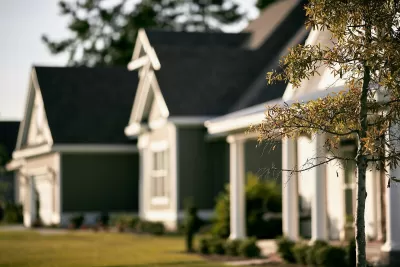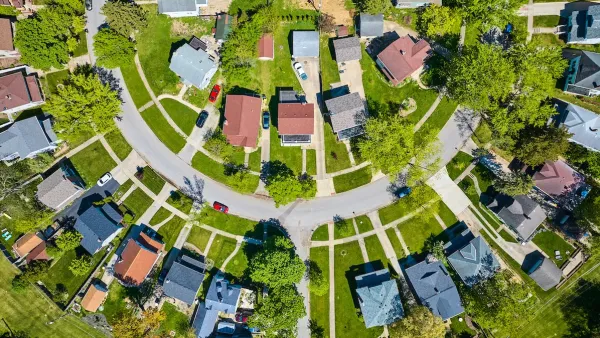Owning a home has long been considered the ultimate aspiration. But social and economic realities mean the stories about and the path to homeownership are not simple and straightforward.

In a feature piece, Katy Kelleher looks at the concept of homeownership as part of the American dream and the disconnects between aspirations and reality. She starts by describing various films where the perfect home ends up terrorizing its occupants, a reflection of our tenuous relationship with the idea of homeownership and the burdens it brings:
There are two different tales we tell ourselves about houses. The primary story is not about ghosts or demons or red rooms or ghouls, but rather about bright futures, long lives, children, grandchildren, and hard-earned success. The second story, the darker story, is about the horror of being trapped.
Homeownership was not always an integral part of American culture, she notes. Instead, the narrative shifted in the post-World War II era, when opposition to public housing was on the rise and the suburbs were expanding rapidly. "Suburbia has always been good for industry. Big houses required big appliances and used lots of carbon, creating a ‘hydrocarbon middle-class family’ that was buoyed by three industries: coal, steel, and automaking," says Kelleher.
For Americans today, particularly millennials, owning a home is harder and even out of reach for many. And homeownership is not fulfilling the needs, perceived or actual, that it had in the past. "Perhaps the real American dream is to find a sense of stability, safety, and acceptance. Maybe this is a downsized version of our parents’ American dream, or perhaps it’s just more honest, taking into account all the different stories we’re fed from the outside, and all the private stories we tell ourselves behind closed doors," adds Kelleher.
FULL STORY: THE HOMEOWNERSHIP OBSESSION

Maui's Vacation Rental Debate Turns Ugly
Verbal attacks, misinformation campaigns and fistfights plague a high-stakes debate to convert thousands of vacation rentals into long-term housing.

Planetizen Federal Action Tracker
A weekly monitor of how Trump’s orders and actions are impacting planners and planning in America.

San Francisco Suspends Traffic Calming Amidst Record Deaths
Citing “a challenging fiscal landscape,” the city will cease the program on the heels of 42 traffic deaths, including 24 pedestrians.

Half of Post-Fire Altadena Home Sales Were to Corporations
Large investors are quietly buying up dozens of properties in Altadena, California, where a devastating wildfire destroyed more than 6,000 homes in January.

Opinion: What San Francisco’s Proposed ‘Family Zoning’ Could Really Mean
Mayor Lurie is using ‘family zoning’ to encourage denser development and upzoning — but could the concept actually foster community and more human-scale public spaces?

Jacksonville Launches First Autonomous Transit Shuttle in US
A fleet of 14 fully autonomous vehicles will serve a 3.5-mile downtown Jacksonville route with 12 stops.
Urban Design for Planners 1: Software Tools
This six-course series explores essential urban design concepts using open source software and equips planners with the tools they need to participate fully in the urban design process.
Planning for Universal Design
Learn the tools for implementing Universal Design in planning regulations.
Gallatin County Department of Planning & Community Development
Heyer Gruel & Associates PA
JM Goldson LLC
City of Camden Redevelopment Agency
City of Astoria
Transportation Research & Education Center (TREC) at Portland State University
Jefferson Parish Government
Camden Redevelopment Agency
City of Claremont





























